Key takeaways:
- Community housing development fosters belonging and support through thoughtful design and communal spaces.
- Storytelling in design connects residents to their spaces, reflecting local heritage and personal narratives.
- Engaging the community in the design process enhances authenticity and relatability, ensuring spaces resonate with their users.
- Utilizing participatory workshops and visual storytelling techniques deepens the connection between residents and their environments.
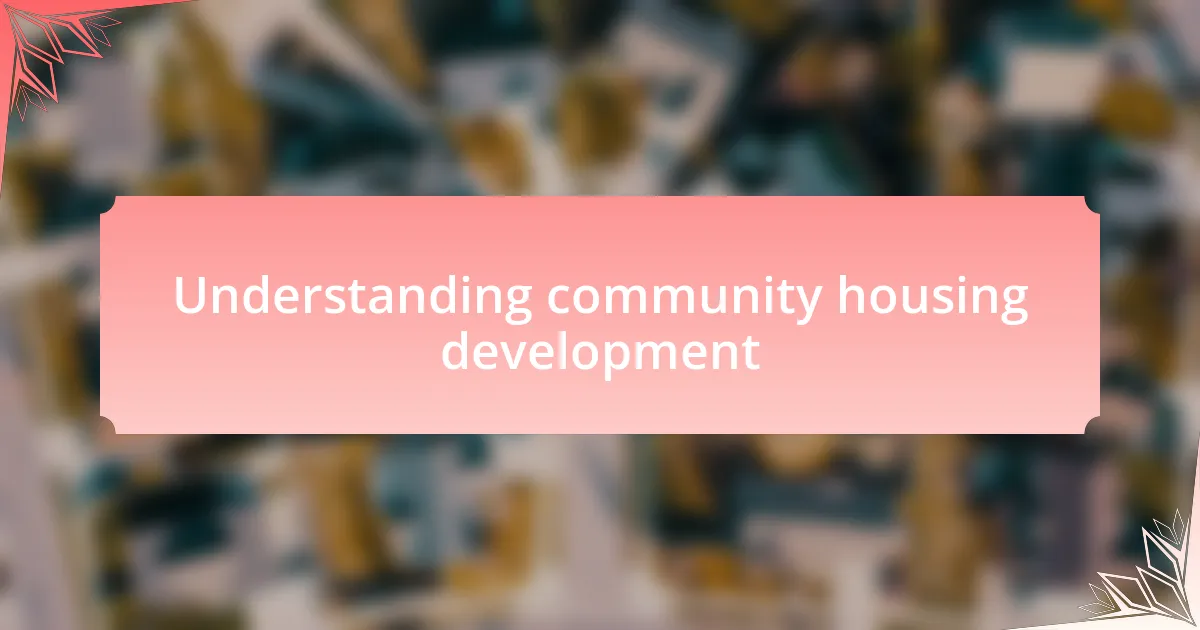
Understanding community housing development
Community housing development is about more than just bricks and mortar; it’s about building a sense of belonging and support among people. I remember visiting a neighborhood where families gathered regularly in a common green space, sharing stories and laughter. Can you imagine living in a place where such connections flourish? It really highlighted for me how vital these developments are in fostering community ties.
It’s fascinating to see how thoughtful design can impact the lives of residents. In one project I observed, the layout encouraged neighbor interactions through shared communal areas, like gardens and playgrounds. This made me think—how often do we overlook the importance of simple spaces in promoting unity? Each corner of these developments can spark connections if we design them with care.
Understanding community housing also requires acknowledging the unique needs of various populations. I once spoke with a single parent who shared how access to affordable housing changed her family’s future. She emphasized that it wasn’t just about having a roof over their heads; it was about stability, safety, and the opportunity for a better life. Stories like hers remind us that at the heart of community housing development lies a commitment to enhancing lives.
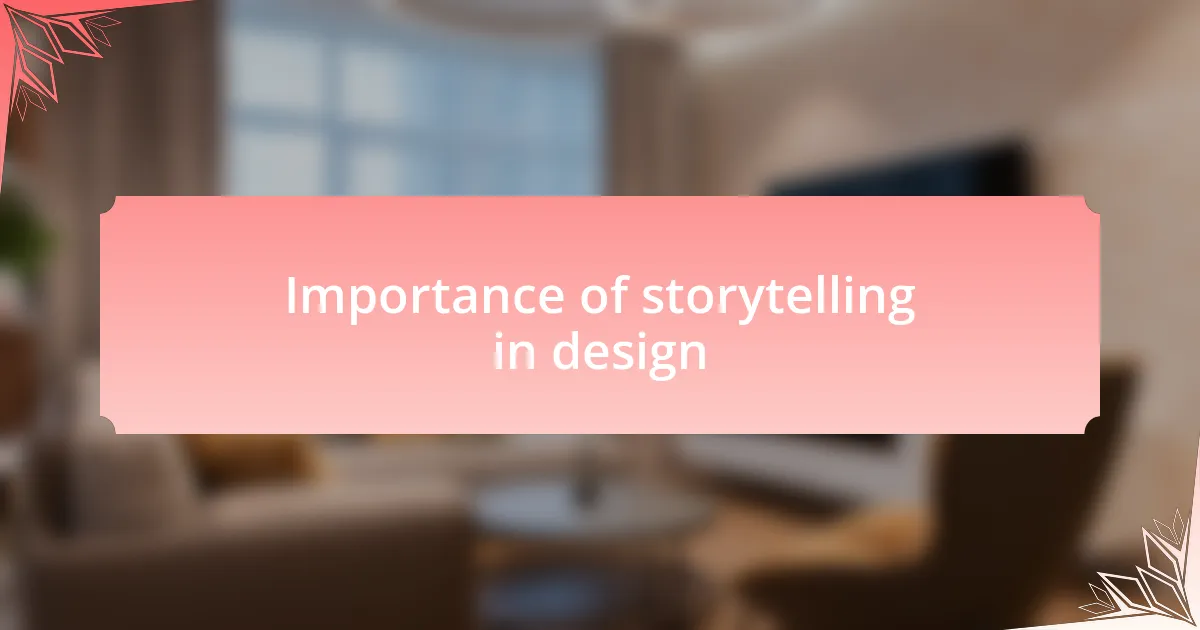
Importance of storytelling in design
Storytelling in design serves as a powerful tool for connecting people to their spaces. I once attended a design workshop where we explored how narratives can shape architectural choices. The idea that every design decision could echo the stories of future residents struck me deeply. Isn’t it fascinating to think that a building can whisper tales of belonging and community just through its layout and features?
When I think of the importance of storytelling, I can’t help but recall a housing project I worked on that incorporated local history into its design. Each mural painted on the walls told a story from the neighborhood, reminding residents of their shared heritage. This not only beautified the space but also instilled a sense of pride among the residents. How often do we allow design to reflect the rich narratives around us?
Moreover, designs that narrate stories foster emotional connections that make spaces feel more than just functional. Reflecting on my experiences, I’ve seen how story-driven design can transform a sterile environment into a vibrant community hub. For instance, designing a children’s playground with themes from local folklore sparked joy and curiosity among kids. Wouldn’t you agree that these shared stories forge a stronger bond between the individuals and their surroundings?
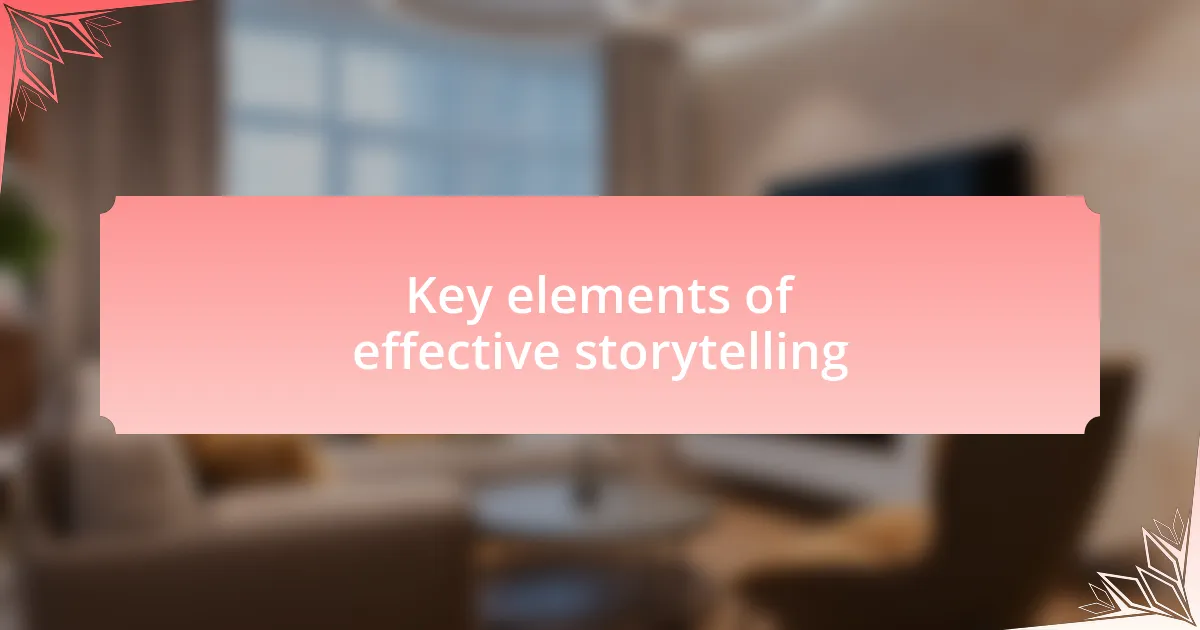
Key elements of effective storytelling
Effective storytelling in design hinges on authenticity. I remember a project where we aimed to create a family-oriented community space. By involving local families in discussions early on, we uncovered their hopes and struggles, which informed our design choices. Isn’t it powerful to think that the voices of those who’ll inhabit the space can shape the environment itself?
Another key element is relatability. I once designed a mural for a community center that depicted the everyday lives of the residents, featuring scenes of local markets and family gatherings. Witnessing their emotional reactions when they saw their stories represented brought home the importance of making a design feel personal. How can a space truly resonate if it doesn’t reflect the people who use it?
Finally, an engaging narrative structure enhances the overall experience. For a recent housing development, we created a journey through the grounds, leading residents from lush gardens to community gathering areas, each step revealing another layer of their shared story. It’s no accident that people remember experiences tied to a narrative. Have you noticed how stories transform places into meaningful landmarks in our lives?
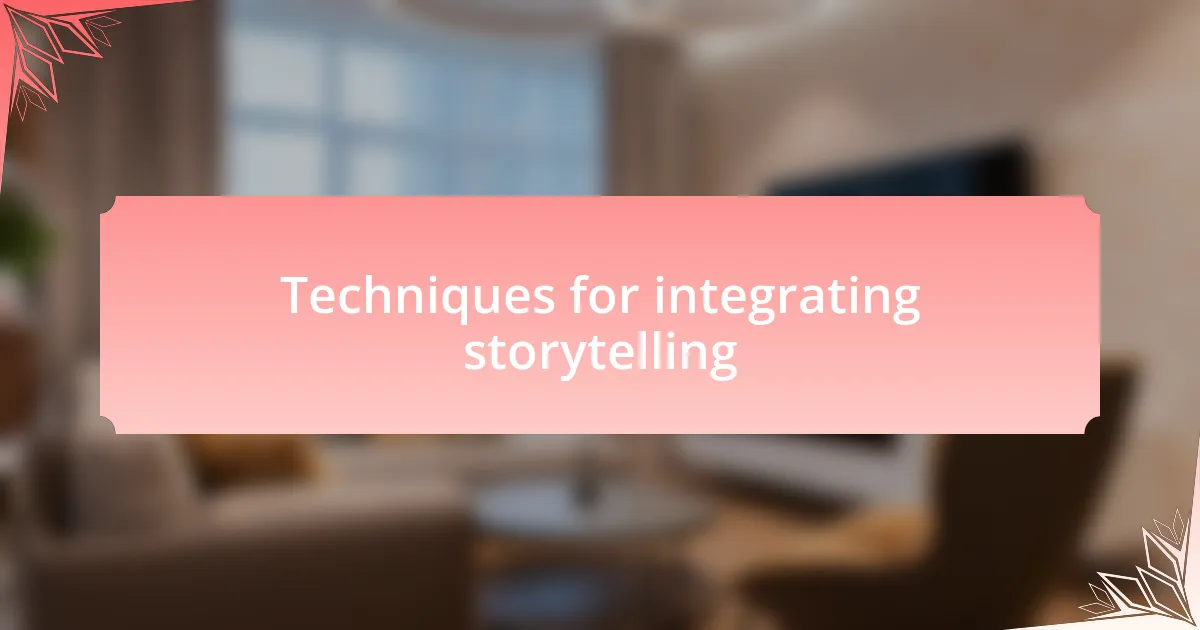
Techniques for integrating storytelling
To effectively integrate storytelling into design, I often utilize participatory workshops. During one project, I gathered community members to share their experiences regarding housing challenges. Hearing their personal stories not only informed our design choices but also fostered a sense of ownership among participants. How can we create spaces that truly serve people without understanding their narratives?
Visual storytelling techniques are also essential. For instance, in one design, I incorporated graphics that depicted the history of the neighborhood, showcasing its evolution and resilience. This gave the project depth and context, making the space not just functional but also a reminder of shared history. Have you ever stepped into a place that instantly tells you a story through its visuals alone?
Using interactive elements is another way to weave storytelling into design. In a recent housing project, we included QR codes on displays that linked to audio stories shared by residents about life in the community. This added a dynamic layer to the environment, allowing people to engage with the narrative in real-time. Isn’t it fascinating how technology can enhance our connection to place through personal tales?
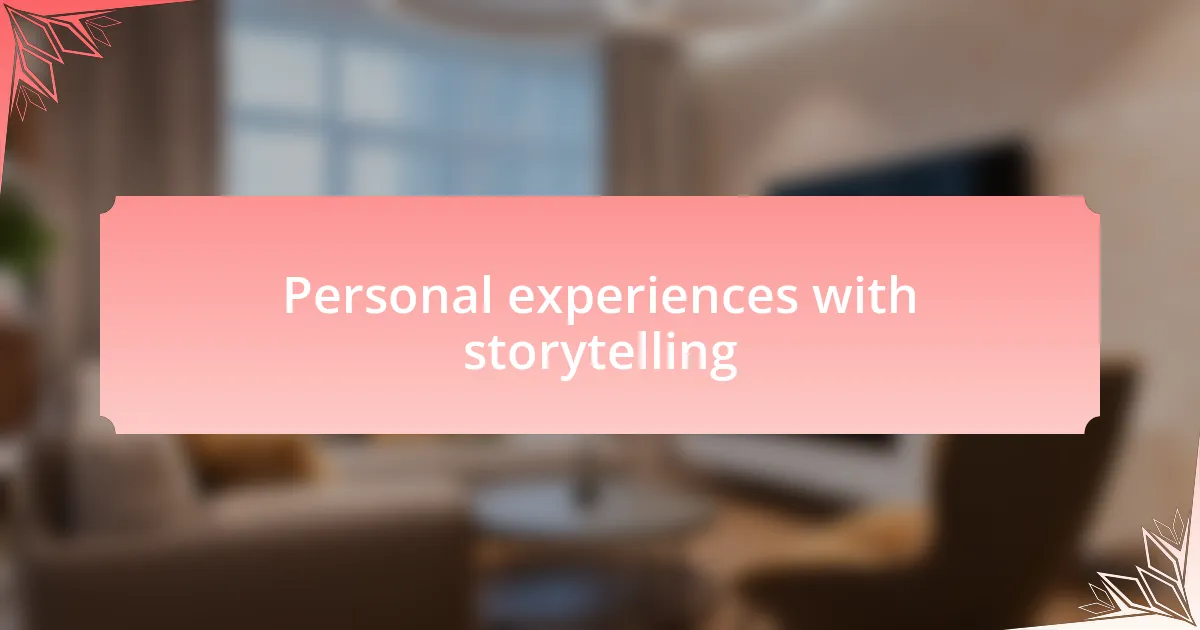
Personal experiences with storytelling
When I reflect on my experiences with storytelling in design, one particularly memorable moment stands out. During a community project, I had the opportunity to meet an elderly resident who shared her memories of the neighborhood from decades past. Listening to her voice, filled with nostalgia and warmth, made me realize how powerful personal stories can be in shaping the essence of a space. It’s amazing how a few heartfelt words can transform a mere design into a living narrative.
I also recall a time when our design team incorporated storytelling into a community mural. We invited local artists and storytellers to contribute, each bringing their unique perspective and style. Witnessing the collaborative process was nothing short of inspiring. The mural became a vibrant tapestry of our community’s history, reminding me that each brushstroke was laden with meaning. Have you ever felt that a single piece of art could encapsulate an entire community’s soul?
A pivotal moment for me was when we established a feedback loop where residents could share their thoughts about design changes. One day, a young mother came to me, excited to propose a playground feature inspired by her daughter’s favorite fairy tale. I realized then how empowering it is to let people narrate their own visions within a space. This experience reinforced my belief that storytelling isn’t just an addition to design; it’s the heart of it. What if every design decision could spark a personal connection?